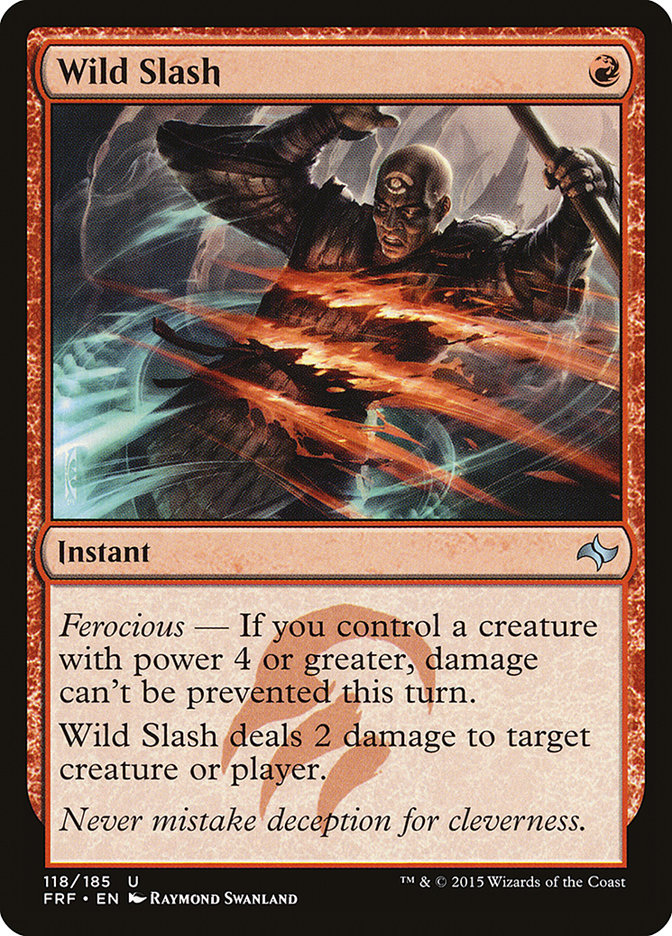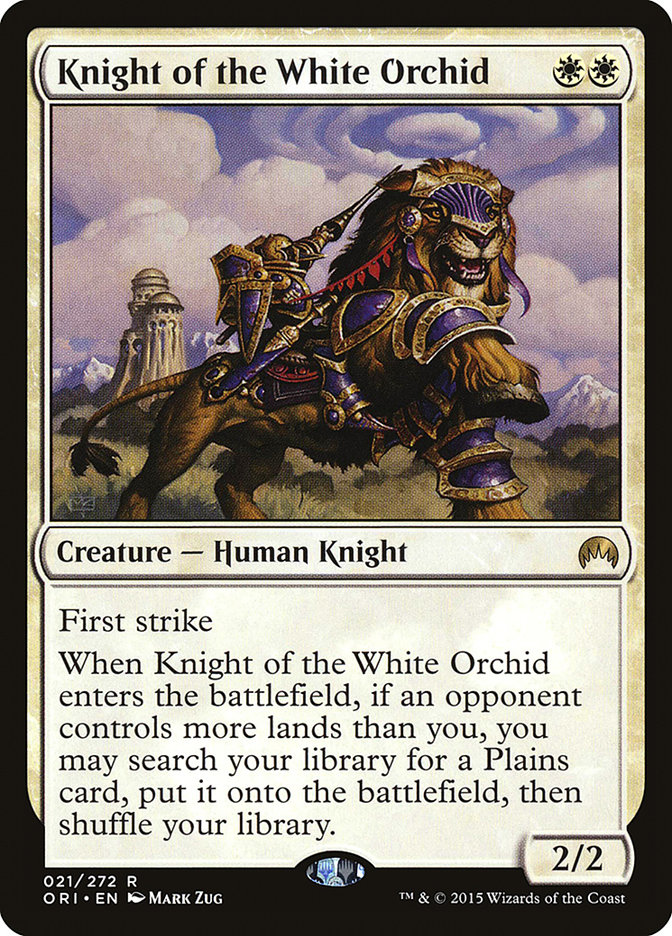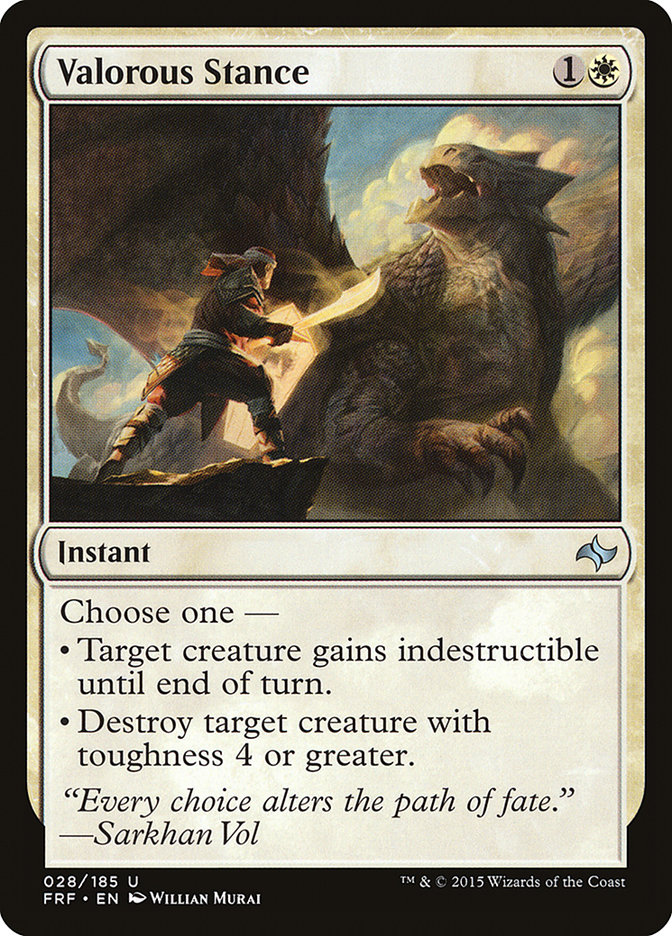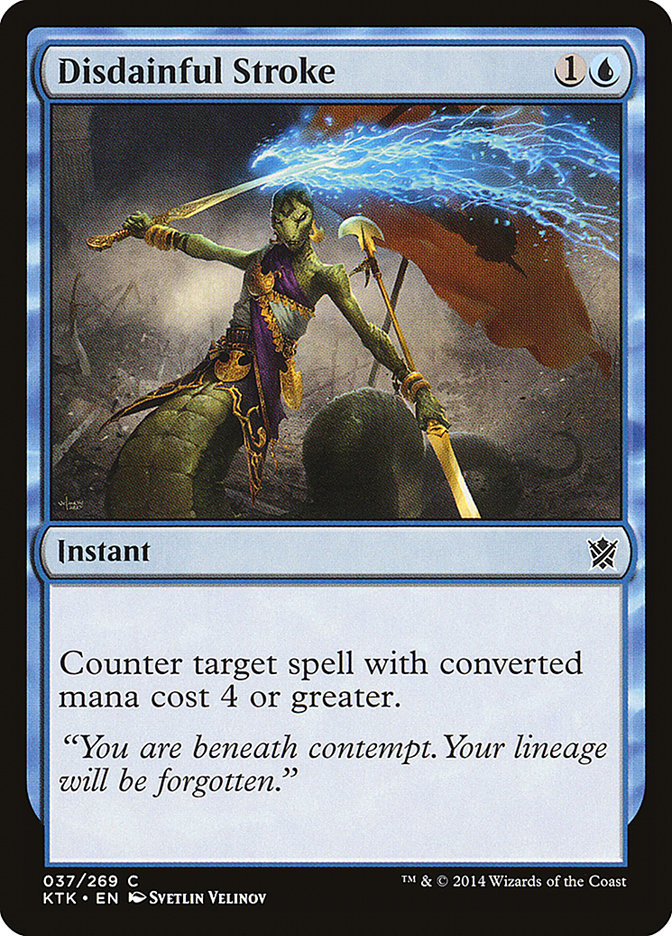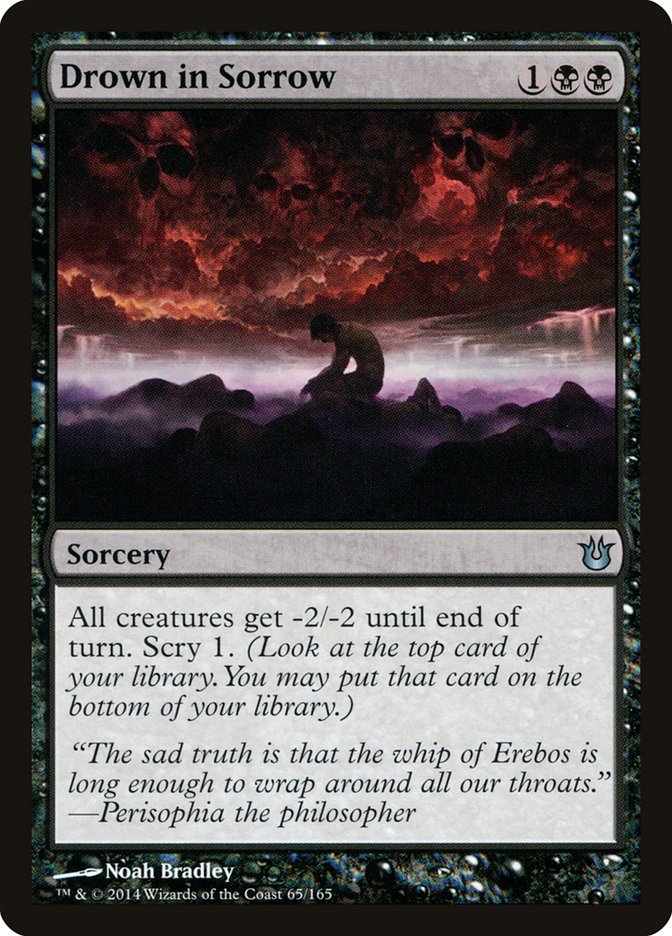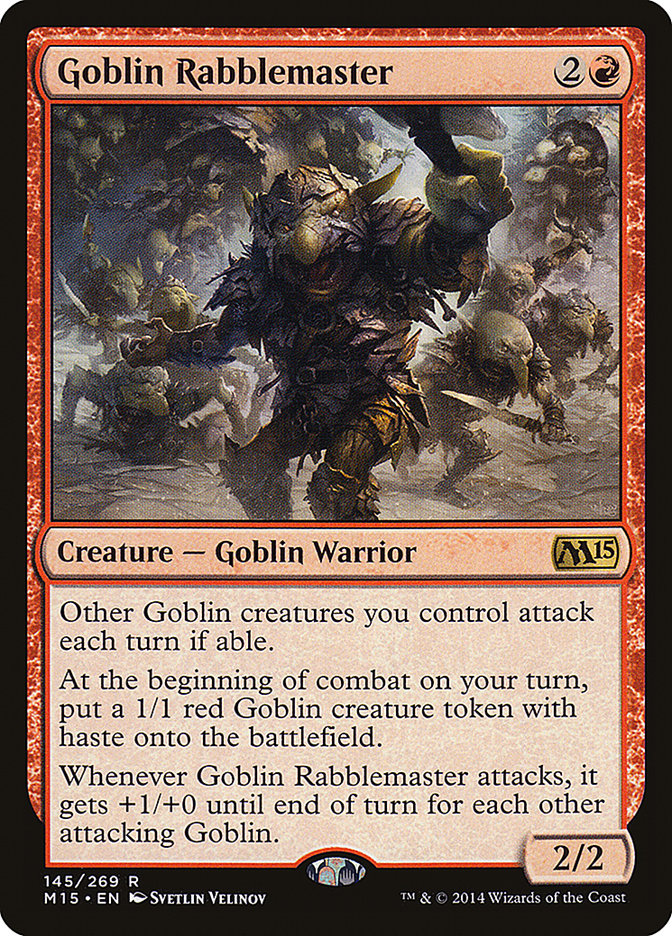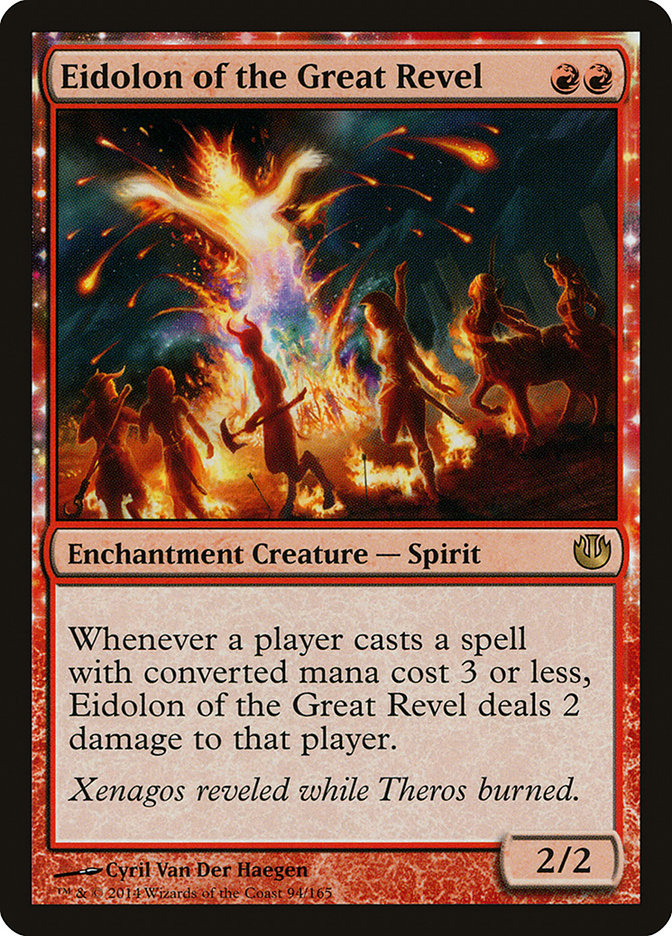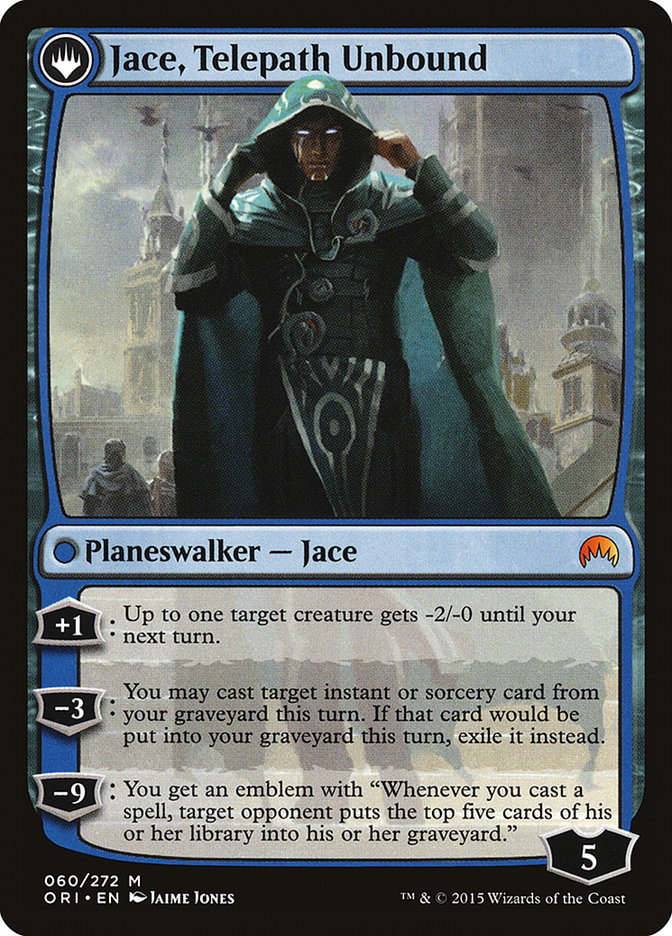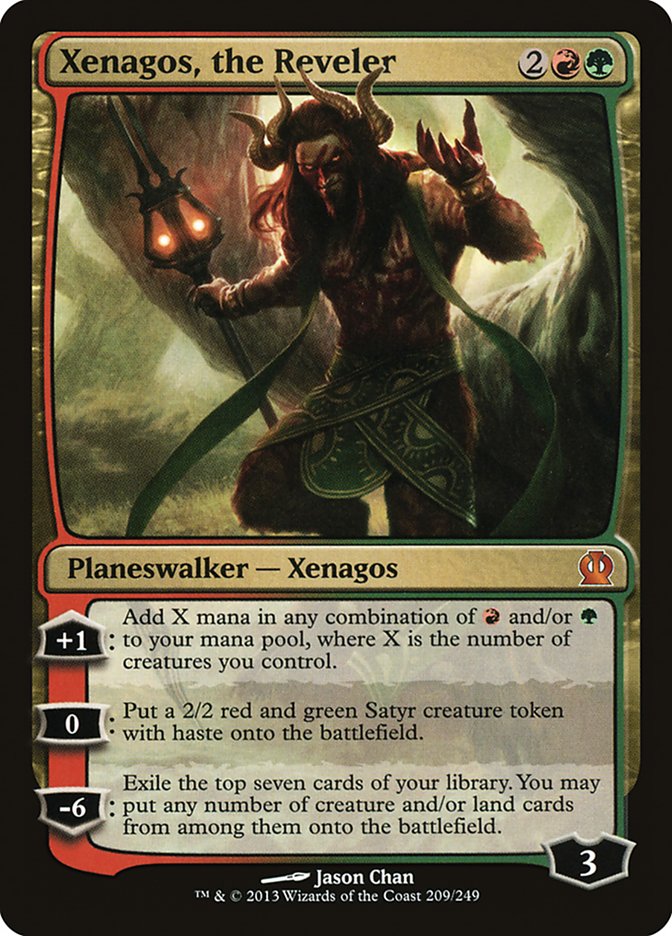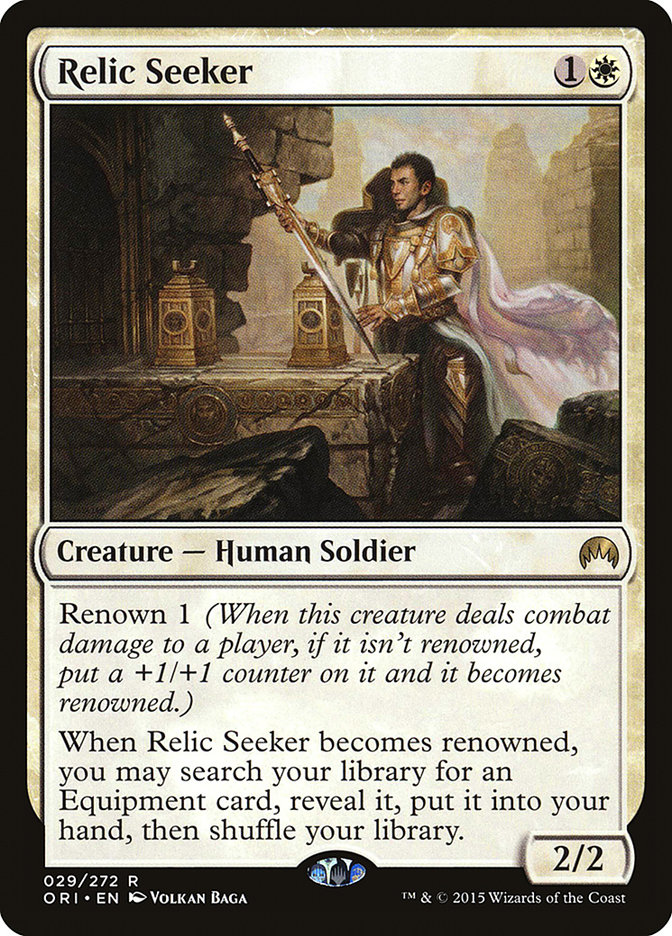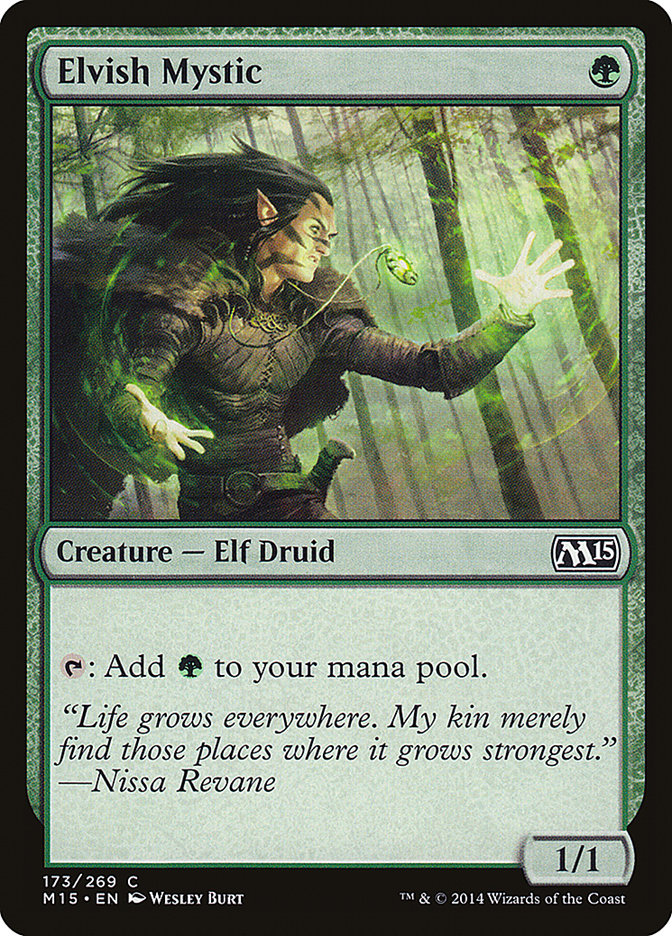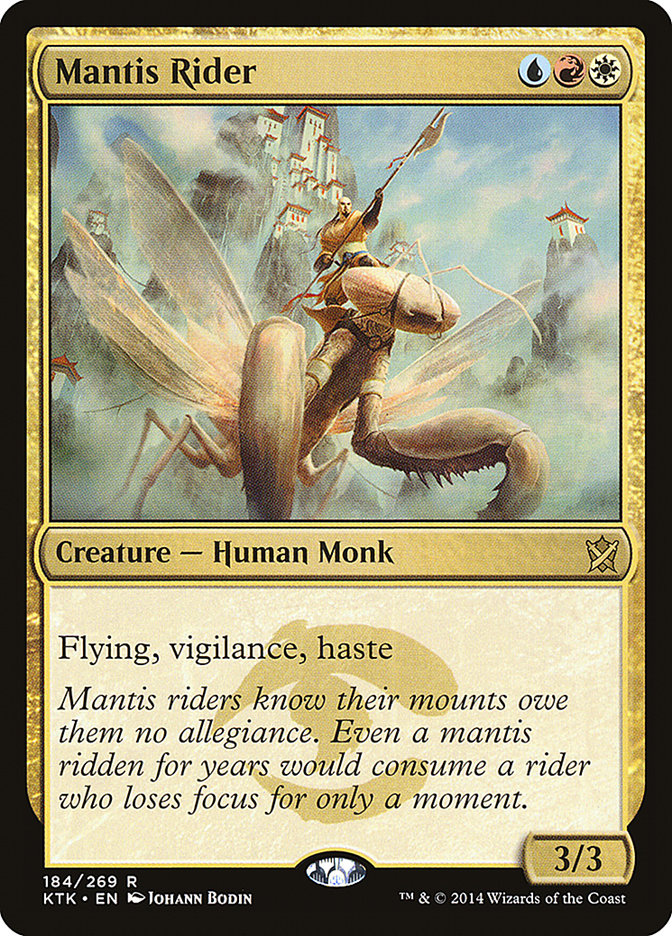Life is easy when you’re on the play.
You have the first land drop and often the first threat of the game. You set the pace and are ahead on both mana and spells cast in the early turns. When you’re the aggro deck and creating problems for your opponent, the world is your oyster. When you’re the control deck, getting that extra turn of reprieve to make sure you never let your opponent get traction sets you right up for smooth sailing.
Magic would be easy if you were always on the play. To win a Magic tournament, you’ll have to win a bunch of games while on the draw. In fact, if you’re winning more than losing you’ll end up playing more games on the draw than on the play. That means that if you don’t have a deck that’s built well to succeed on the draw, you’re setting yourself up for failure.
Breaking serve is a term from tennis that means to win the game when you’re disadvantaged, when you have to react rather than initiate the action. It involves sometimes having to decide whether to dart left or right in anticipation of your opponent’s first move. Lightning Strike may be great against Abzan Control when you know that they have four copies of Fleecemane Lion in their sideboard… but are they bringing them in? Guessing right could be huge while guessing wrong could be disastrous. What can be more disastrous is configuring your deck after sideboard to be aggressive when you really should be reactive, or vice versa.
One of the biggest keys to success in Magic is knowing when to switch gears and the line between the two might be as fine as whether you’re playing first or not. Knowing how to adjust when you have to react is huge.
I had a secret with Boss Sligh that I never really talked about. When the deck started to pick up steam and mirror matchups became a thing, I had a trick up my sleeve for the sideboarded games: I’d choose to draw first. Why? Because everything traded one-for-one and the player with the last creature in play would win. Running your opponent over was impossible when they were as fast as you. Being reactive and even a half-step slower was how the Mono-Red dittos of the time played out.
Cards gain or lose value depending on whether you play first or second. Below are some of the notables from Standard that are most impacted by being on the play or on the draw. Realizing how your role in a matchup changes and what cards are less impactful could be the difference between a match win or a painful loss.
Better Playing Second
The new Fiery Impulse and the occasionally sideboard Magma Spray fall into the same camp. When Wild Slash trades with a card, it will be one of the following:
- A one-drop that you need to remove out of something hyper-aggressive, like Zurgo Bellstriker or Kytheon, Hero of Akros.
- A two-drop that’s key to their curve, like Rakshasa Deathdealer, Seeker of the Way, or Jace, Vryn’s Prodigy.
- A three-drop that can win the game on its own, like Goblin Rabblemaster.
Wild Slash is a card that will sometimes push you further ahead cheaply at the right times, but it can greatly stop the opponent in their tracks for a single mana. This makes it one of the better cards to have in your opening hand when you’re expecting a cheap creature rush.
Fresh on the scene, so there is no real surprise that it hasn’t made its way into many lists yet. The community has been wondering when Mono-White Devotion will become a thing, and this alongside Archangel of Tithes may distract people from the pure raw power that is Knight of the White Orchid.
It may be funny to think of a two-drop creature with no particular strengths against any given matchup as a sideboard option, but it’s very strong on the draw as a means to take back the initiative – it’s not often that white gets a card that is similar to Elvish Mystic or its brethren in Rattleclaw Mystic or Sylvan Caryatid.
These trade up on mana at the cost of possibly being a dead card without a target. That means that you pay two mana to trade for a more expensive card, typically four-plus mana. Valorous Stance hits Courser of Kruphix and huge Heroic creatures and will commonly get something that costs an average of four, like Siege Rhino. Getting to play a tapped land on turn three and kill or counter their creature is exactly the way you need a game to go if you want to break serve.
These are great sideboard cards in decks without little creatures, like Esper Dragons or Jeskai Control. What’s interesting about these cards is when you’re playing a deck like Jeskai Tokens or Abzan Midrange and have access to these cards but they come with a much higher sacrifice. These cheap sweepers are obviously great in a matchup like Atakra Red, but what about when you’re in something like a mirror match with your own cheap creatures?
Maindeck discard is okay, but is really good on the draw and less effective on the play. Here’s why.
You want to play attrition, as in trading resources whenever possible one-for-one, whenever you have a resource advantage. When you’re plus a card on the draw, it’s a great time to trade a card for a card. Also you’ll often trade a Thoughtseize for their on-curve card like a two- or three-drop.
Going first, a card like Thoughtseize is weakened with regards to normal, fair games that involve curves and a board presence. You don’t want to trade one-for-one when behind a card while not developing your board. My recommendation to Thoughtseize players and for similar discard spells: consider sideboarding them out on the play in favor of more proactive cards when you’re not against something that’s a combo deck.
Weaker Going Second
One of the most dominate creatures in recent history. One, six, eight, ten. That’s how much damage Goblin Rabblemaster does turn-by-turn starting when it first comes down, which can be turn two, or in Legacy’s case turn one. Undeniably a powerhouse early and when left uncontested.
But on the draw… against a prepared opponent… Goblin Rabblemaster can be outright embarrassing. The Goblin tokens get eaten up by stray blockers that came down before you could really take off and now Goblin Rabblemaster never becomes good at attacking – and of course it is never good at blocking. If the opponent follows up their aggressive draw by killing your three drop with literally anything like a Hero’s Downfall, you could be buried soon. If the removal spell is cheaper and comes with a second spell that turn, the lights are 100% shut off.
Another creature that’s amazing on the play. Against an opponent that wants to win in the late game, like Esper Dragons, or a deck that goes big with hits for 40, like G/R Devotion, the life loss on your side is whatever. Against something close to the red player’s range, Eidolon of the Great Revel ranges from a two-for-one to stone uncastable. If it’s in your maindeck, sideboard it out on the draw against these mirror-match-esque games.
Shown to be awesome from the SCG Chicago coverage, Jace will not immediately catch you up if you’re losing. Jace is a great play on turn two on the play, or against a slower deck on any turn, but will be terrible on the draw against an aggressive deck that will pressure you so Jace doesn’t matter or threatens to just remove Jace with something cheap like a Wild Slash.
Great in the G/R Devotion decks as both an accelerant and a threat, Xenagos loses potency when the 2/2 is too small to be relevant or your creatures are at risk of being killed early on in a matchup, leading to the normally-potent +1 ability being poor.
I, along with many others, viewed this as a possible second coming of Stoneforge Mystic at first. With no copies showing up in the Top 64 of SCG Chicago I can give you the reason why, other than the current paucity of Equipment options. The card is just terrible on the draw. The payoff comes after connecting with the opponent, and that’s just not something you can count on going second. Relic Seeker is the best of the Renown series, but the same logic goes for the rest of the bunch.
The Nuts Either Way
Brad Nelson has Elvish Mystic as the best card in Standard. Elvish Mystic is the best card in G/R Devotion by a country mile, which is saying a lot as it’s the only non-Rare/Mythic that’s not a basic land in the maindeck unless there’s a stray Rugged Highlands floating around in there. The ability to take the play back from the opponent with a one-drop, enabling a Courser of Kruphix, Deathmist Raptor, or morphed Den Protector, is one thing… but being two turns ahead and slamming Whisperwood Elemental when your opponent has only two land in play is downright filthy.
At SCG Chicago, we saw Jeskai players come out in full force after Magic Origins gave it some much-needed inspiration and innovation. Gerry Thompson has been experimenting with decklists and there are just so many ways to build this archetype. Mantis Rider has basically become an auto-include in any non-token strategy. Most of the time when we see a creature with haste in this current format it has been Dashed into the red zone. While playing a Mantis Rider on the play gives you a lot of momentum, on the draw it’s still a pretty good way to start a race. Either way, unless they are playing Lighting Strike or Bile Blight and have two mana open, you should feel pretty confident about playing a Mantis Rider.
An Eternal Example
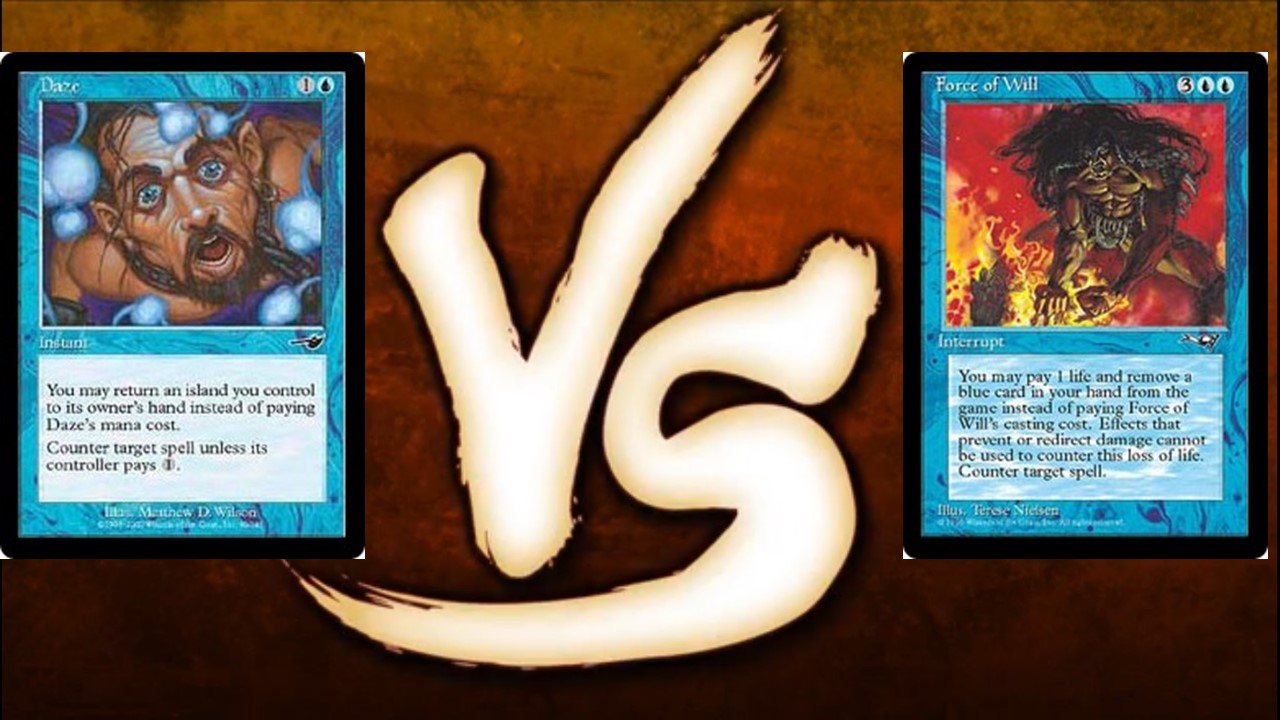
Not exactly common knowledge just yet, but among those that’ve played blue a lot in Legacy over the past couple of years a truth about the counterspell configuration has emerged:
You want Force of Will on the draw and you want Daze on the play.
You want to deal with your opponent’s degenerate draws with Force of Will and losing two cards to do so isn’t so bad when the sting is softened by that extra first-turn draw step. In the case with Daze, when you’re playing second, you’re behind a land drop which means your opponent is more capable of paying for Daze.
New Mulligan Rule
Pro Tour Magic Origins will test and flesh out the new experimental mulligan rule where a player gets to scry 1 after a mulligan, whether it be to six or below. From what I’ve heard from those that have tried the new rule in their own time, the feedback has been overwhelmingly positive. I’ve actually not heard anyone speak a bad word about the new mulligan rule, either in real life or via social media. I’m personally hoping that the new rule will become the standard after its test run and don’t see any reason why it wouldn’t be.
What does allowing you to scry after a mulligan do, really? Well, outside of setting up a Delver of Secrets flip, it allows you to know the top card of your library in cases that you don’t want to bottom, which will influence whether you want to use a fetchland on play a Temple on turn one.
Those are slightly inconvenient decisions that you’ll have to deal with when you mulligan on the play. On the draw, you’ll draw first before playing your first land so there’s no need to tiptoe around the top card. Overall, the new mulligan rule will benefit those on the draw more than on the play, which is great. Anything that punishes people less for losing the die roll or having to mulligan due to variance will be great for the game.
Basically I predict it will serve as a future incentive to shift deckbuilding to be on the draw, and perhaps so much so that you’d want to choose to draw more often. I’d love for the new mulligan rule to become full-time and to go into a Magic tournament with a deck that is extremely comfortable on the draw, but fine with being on the play as well, nearly eliminating the importance of the initial pre-game die roll to determine who plays first in game one.
Conclusion
I hope that the examples of what’s better going first or second respectively are helpful but I’m sure I’ve missed a few here and there. As much of an aggressive guy as I am, I do like myself some card advantage. I sometimes wonder if I choose to draw more than anyone else. Heck, even at my last Modern tournament, I chose to draw when I could. Drawing first is, in my opinion, one of the most underrated and unexplored aspects of Magic. Sideboard games slow down and things trade off one-for-one more often. If you catch yourself in a mirror match or otherwise in an attrition-heavy matchup during your next tournament, take a moment to think about if you’ll win through early pressure or by having the last threat. Some of the most important decisions in a game are made before the game even starts: determining your role, sideboarding appropriately, and choosing to take the extra card.

